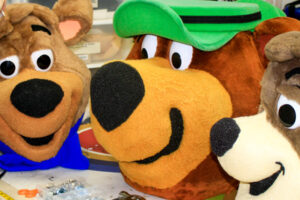
There are three different options that are commonly used for custom mascot heads: traditional sculpted foam, vacuum formed foam, and vacuum formed plastic.
Professional grade mascot costumes are no small expense. A mascot is an investment in your brand, and like any investment, you want to see if it’s paying off. In the business world, we call this finding your “Return on Investment” (ROI). There are two steps to figuring out your mascot program’s ROI.
A lot of people can find this difficult, as a mascot’s performance as a branding tool is difficult to put into numbers. However, we’ve got a few methods and performance metrics that we’ve learned over the years that we’re going to pass on to you. Without further a due, let’s get started!
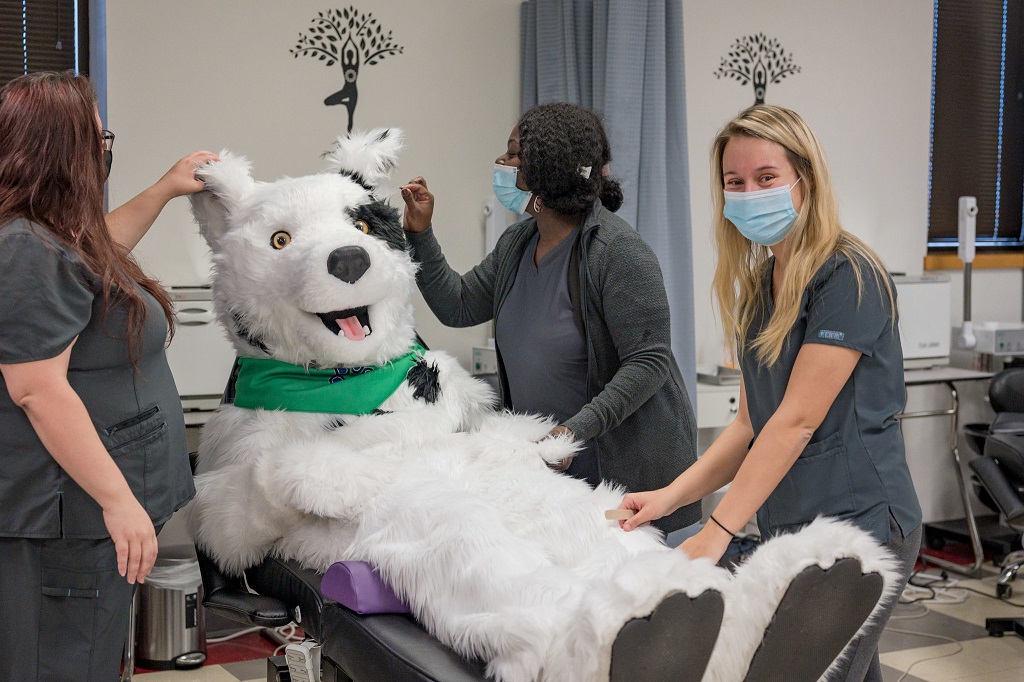
Every time you use your mascot for an appearance, an event, or a promotion, you are improving your mascot’s ROI. The more you use the mascot costume, the more you are getting out of your purchase. Here are a few ways to increase your mascot’s exposure, brand value, and ROI:
Social Media
Your mascot should be appearing on your organization’s social media regularly. Alternatively, you could have your mascot have its own page, where you may find it easier to develop your mascot’s personality, and allow for more direct contact between your mascot and fans. Returns here can be found in changes in likes, follows, tags, and comments.
In-Person Events
Just like with social media, public events are a method of generating impressions. Giving your mascot the ability to interact with fans helps to personify your mascot, while leaving people with positive brand attitudes. Following up with a social media post after an in-person event is a great way to piggy-back off of your in-person success! Returns for this situation take the form of things like event sales, RSVP’s, and mascot interactions throughout the event.
Merchandising
Merchandising is often overlooked as way your mascot can help pays for itself. Your mascot is meant to be the personality and face of your brand, and this is something you can monetize. Think of all the merchandise you can sell with your mascot’s likeness in your gift shop or online store:
Heck, pick your favorite sports team, search up their online merchandise store, and see what you can find with their mascot on it. Our personal favorite (and hometown hero) Bucky Badger has his face plastered on a ton of fan gear. This is ultimately a return for UW Madison. All these examples can have quantifiable numbers in which to find your ROI with.
Tracking a mascot’s ROI is a crucial step when it comes to measuring your mascot’s return on investment. Taking the time to log the history of your mascot’s adventures gives you the ability to use math to calculate how much your mascot costs to appear per hour. Finding your mascot’s actual ROI will involve you adding both your returns and your expenses. This can be found by recording the following:
Adding these expenses up and using simple division can provide you with an accurate measurement of your cost to operate. For example, let’s say you’re a high school and your mascot only makes an appearance during school events. If you have 30 events per year, and use the mascot for 2 hours, you have the following formula:
30 events x 2 hours = 60 hours of mascot appearance per school year.
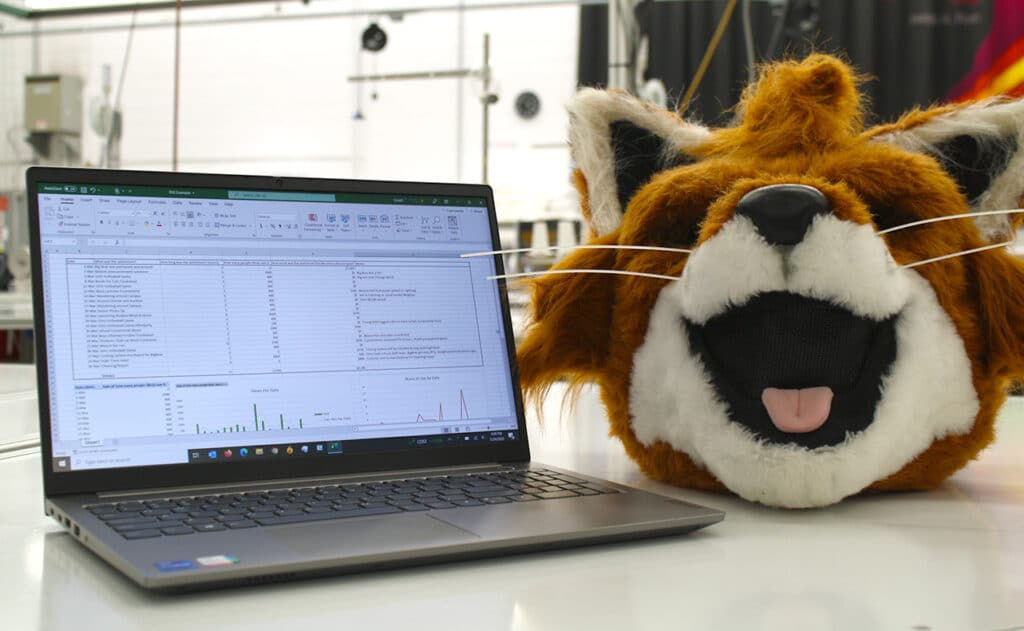
If your mascot cost $7,000.00 when you bought it, then you are essentially paying $116.67 per hour for your mascot to appear during that school year.
$7,000.00 / 60 hours = $116.67/hr
Now obviously, this is a very simplified example that led to a high ROI. This example did not factor in the possible merchandise sales, mascot exposure, social media gains, memories made, possible maintenance/repair costs, etc. However, this is basically the kind of math that advertisers use, and at the end of the day that’s what a mascot is. A funky, colorful, and huggable advertisement.
To give you a visualization on a simple yet affective way to log your mascot’s adventures, see the picture below!

Using this basic graph above, we can calculate a few ROI related numbers:
(Note: We excluded the initial purchase price of $7,000 for all of these calculations.)
It’s simple accounting like this that makes keeping track of your ROI easy as pie. However, this process can be as advanced as you want it to be. For more detailed tracking, consider including performer wages, time spent traveling with the suit, and the number of views/shares on social media. Also, if you have multiple different mascot characters, or several copies of the same character, be sure to note which costume is which!
We get it, a quality mascot can be a bit expensive and is a hard investment to pitch to someone looking for hard-hitting numbers. A way to gather immediate data can be accomplished through an A/B test. An A/B test is essentially an experiment wherein two or more variables are pitted against each other head-to-head, to see which variable produces better results.
For example, let’s say you are a baseball team whose stadium has two gift shops, and you want to see if a mascot’s presence makes one gift shop sell more than the other.
The first thing to do would be to find the average profit of each giftshop during a regular week. Then tell your mascot to go hang around one of the gift shops for the next week. After that week of your mascot hanging around, see if there has been any big increase or decrease in that gift shop’s profits when compared to the other gift shop without a mascot nearby.
This is a simple way to check for ROI without having to do a ton of logging and tracking of your mascot’s activity. You can also apply an A/B testing method to something like ticket sales, concessions sold, social media follows, or RSVP’s generated.
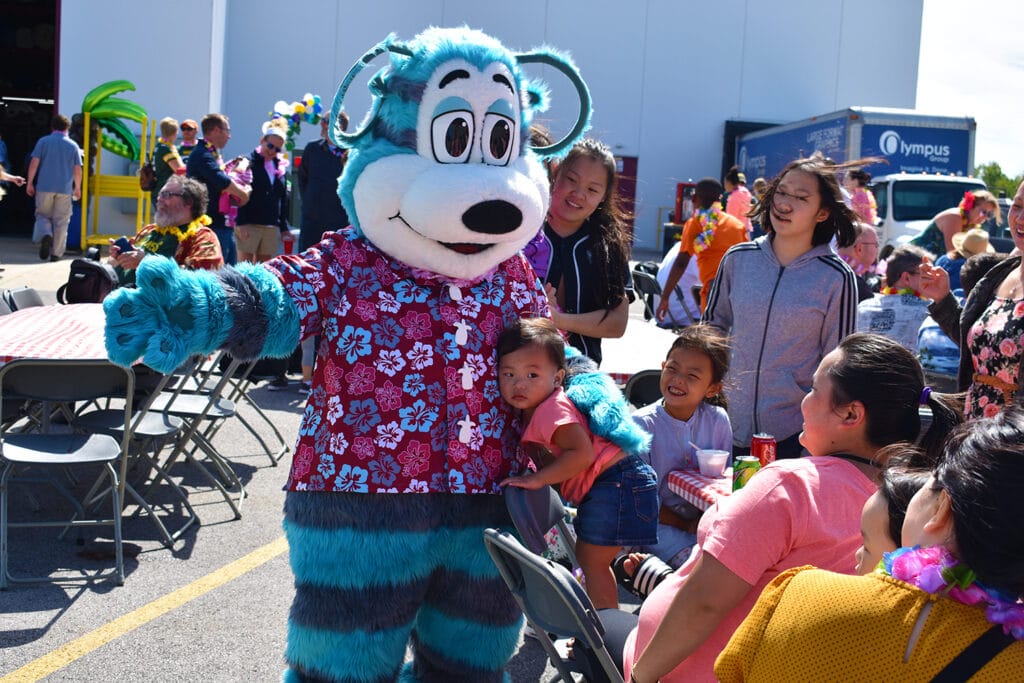
Don’t have a mascot yet? We can help!
Please click here or fill out the form below to speak with one of our mascot experts!

There are three different options that are commonly used for custom mascot heads: traditional sculpted foam, vacuum formed foam, and vacuum formed plastic.
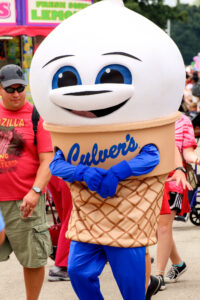
Starting a Corporate Mascot Program
Starting and maintaining a Corporate Mascot Program can be an intimidating task. In this blog we list some things to consider before choosing a mascot vendor.
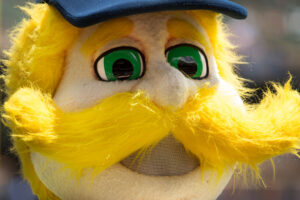
Mascot Vision: Inside a Mascot Head
You can clearly see a mascot, but can a mascot clearly see you? Depending on the mascot design, there are three different types of mascot vision available. Mascot vision can be through the eyes, mouth, or a specially designed foam shape. “See” the mascot vision possibilities for your costume!
Custom Mascots
Mascot Services